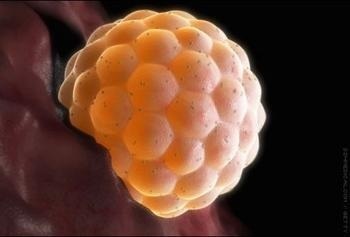Pregnancy week by week
| Selected week: |

You
In about 14 days from your last menstruation one egg is released from one of your ovaries. This is called ovulation. The egg starts to move along the oviduct and hopes to meet a friendly sperm there. The suitable period for fertilization is very short and the sperm should break through the strong wall of the egg within 12-24 hours after its release. If the sperm has fertilized the egg and the cores of the sperm and egg join, a new being is born which is called zygote.
The single cell is divided into two within 24-36 hours after fertilization; in 12 hours this is divided into four and this process continues up to the formation of the set of cells called morula.
About 3-4 days from the fertilization the morula leaves the oviduct and enters the uterus and now this is the set consisting of about 100 cells called embryo.
Conception with the help of IVF
If you have problems of getting pregnant, you could consider IVF procedure. All IVF procedures start with hormonal therapy which stimulates the development of several follicles in the ovary. These are collected as eggs which are thereafter fertilized in the test-tube to create several embryos. After a couple of days in the incubator these embryos are inserted to the uterus through vagina where the nesting is carried out and pregnancy starts.
Just as in case of natural pregnancy, no pregnancy occurs from each nesting of embryo, thus the remaining embryos are frozen – so that in case of failure of the first test one could try again.
Your baby
Your baby is already unique. If the sperm fertilizes the egg, the information coming from the chromosomes of the mother and the father begins to form your baby’s DNA. The sex of the child is also set in this early stage – all thanks to sex chromosomes in the father’s sperm.
Are you pregnant with more than one child?
Here the matters become complicated and require slight explanation.
- Dizygotic (fraternal) twins – dizygotic twins occur when two eggs are released from the ovary or ovaries which are fertilized by two separate sperms. The dizygotic twins could be of the same or different sex and they look like usual sisters and brothers.
- Monozygotic (identical) twins – monozygotic twins occur when one egg is released and fertilized which is later divided into two. The monozygotic twins have the same chromosomes and sex and they have also the same hair and eye colour and blood group.

